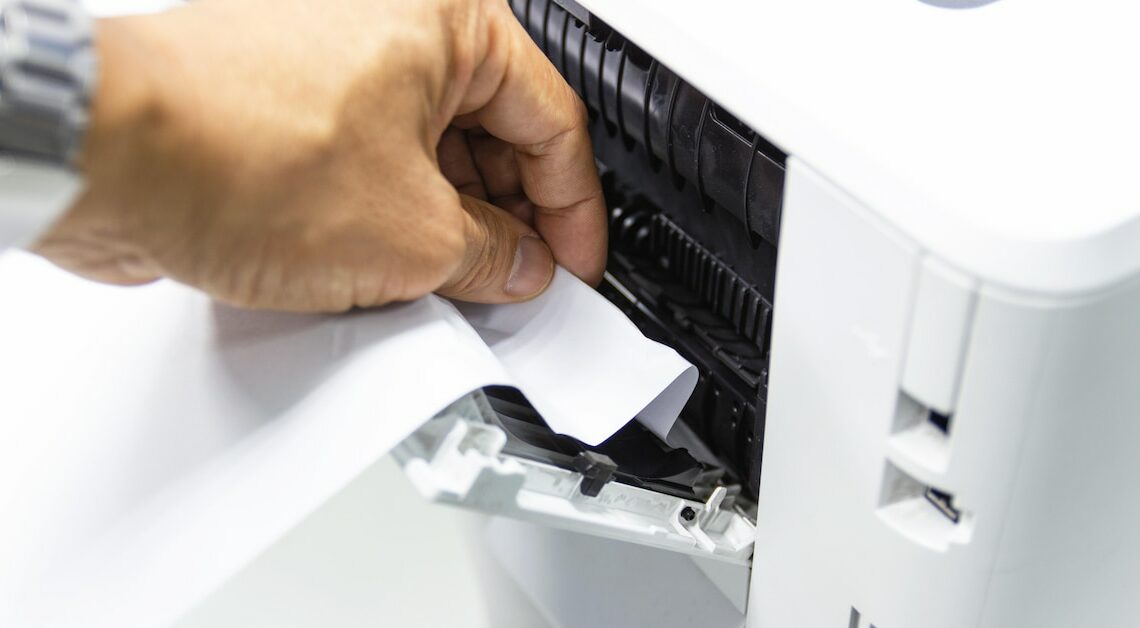
If you want to repair your printer, it is best to proceed strategically. Many problems can be solved with simple instructions.
Repairing a printer: The best way to proceed
A printer does not always work as expected. However, you have the option of fixing various problems from home without much effort. So before you decide on a new printer, you should take a closer look at your device in terms of sustainability.
- If your inkjet printer is not printing cleanly, first check the cleaning pads. If these are dirty, this can cause problems with printing. You can usually replace the cleaning pads in the area of the print head very easily. The manufacturer offers suitable pads for your printer as spare parts.
- If your printer feeds the paper incorrectly even though you have inserted it correctly, the feed rollers may be worn out or defective. In this case, all you need to do is put a little spirit on a lint-free cloth and carefully clean the rollers.
- If the print result is not as desired, it may be that the ink in the cartridges has dried out or is empty. Check the ink cartridges and refill them or replace them if necessary.
- If your laser printer prints vertical white stripes, it may be that the toner in the cartridge is no longer distributing the color evenly. In this case, it is helpful to shake the cartridges well so that the toner can be distributed better again.
- However, if your inkjet printer prints in the wrong direction or the result appears to be shifted, the alignment of the print heads is no longer correct. In this case, realignment is helpful. Calibrating the print heads can help here. You can do this in the printer menu. The individual steps can be found in the operating instructions, as they can vary from printer to printer.
Check error messages
Many modern printers report errors during print jobs that appear on the device itself or in the computer system. It is not always immediately apparent what the problem is. It is therefore important to take a closer look at the printer.
- If your printer reports that the cartridge carriage has stopped moving or is blocked, the gear may be causing problems. It may be cracked or completely broken. In some cases, the gear can be glued, but often a replacement is needed, which some manufacturers provide.
- If your printer no longer prints, you need to change or refill the cartridges. If your printer no longer recognizes the cartridge, the contacts are often dirty. This can happen when removing or inserting the color cartridges. It helps to clean the contacts specifically with a lint-free cloth and print head cleaner or to use the relevant cleaning program.
- If your printer still won't print, take a closer look at the error codes. Code 02 means that the device has problems with the printer cable or the driver. Updating the driver often helps.
- Error code 10, W-10, W-13, 26 or 29 indicates that the printer has not recognized the toner cartridge. Remove the cartridge from the device and reinsert it.
- Code 11, I-01 or W-05 indicates that the printer needs new paper. The paper tray is probably empty, so it's best to add enough printer paper immediately.
- With error code 13, 84, W-02 and W-03, your printer reports that paper is jammed in the device. Remove the paper and sort it carefully before reinserting it.
- Code 16, E13 or 1686 is easy to fix. It means that the color cartridges are running low on product. Replace the old cartridges with new ones or refill them.
- If you receive code 22, your computer cannot connect to your printer. Turn off all devices and check the cable or internet connection.
You may also be interested in these topics:
- Printer is not responding – that's why
- Printer is offline – what to do?
- Add printer: How to add additional devices
